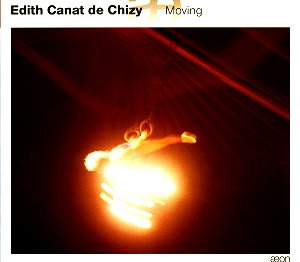Some time ago, I enthusiastically reviewed
a recording of some of Edith Canat de
Chizyís orchestral music (Timpani 1C1048).
This included a superb work for string
orchestra as well as her magnificent Violin
and Cello Concertos. Here is another release
with more of her music, in this case chamber
music. This is for strings, a medium for
which she writes most idiomatically. Of
course her early training was as a violinist.
Her trios for strings were composed over
the decade 1991-2001, and fully demonstrate
the extent to which her mastery of the
medium has developed. The basic components
of her mature music are already clearly
displayed in Hallel, her first
string trio completed in 1991 and the
earliest work here. The recent pieces,
however, exhibit a still greater assurance
and a greater freedom acquired over the
years. Hallel, i.e. the Angel of
Appeal in the Hebrew tradition, opens
with an energetic, arresting gesture marked
Violent, panting. This will later
be contrasted with more expectant sections
creating a constant interplay of powerful
jubilation and anxious expectancy. The
string writing in the First Trio is predominantly
homophonic, much more so than in the other
ones. The Second Trio Tiempo, completed
in 1999, is indirectly inspired by a poem
by Federico García Lorca evoking
Time and Eternity. As a result, the music
is full of flights of fancy interrupted
by short pauses or spiralling back to
ostinato figures acting as pedal
points. The music, while preserving most
of Canat de Chizyís hallmarks, moves with
great freedom and even greater assurance.
The most recent trio Moving, completed
as recently as 2001, confirms the composerís
full mastery of the medium. The title,
implying both meanings of the word, reflects
the overall mood of the piece and the
nature of the music. This again moves
effortlessly with much energy and imagination
while retaining real expressive power.
As I remarked in my previous review, expression
is paramount to Canat de Chizy and her
strong intellectual grip on the material
never obscures her will to communicate.
Vivere, her
first string quartet, also composed
in 2001, consolidates the composerís
mature music making, in that she now
feels free to compose without any further
reference than her own mind and heart.
That she is now full master of her trade
is evident in the brilliant, often subtle
writing for strings and in the joyfully
exuberant drive of the music.
The same characteristics
are also displayed in Irisations
for solo violin and in Danse de líaube
for solo double bass. The former, written
as a test piece for the Conservatoire
National Supérieur de Musique,
is a theme and variations in all but
name, exploiting the many facets of
modern violin writing without ever falling
into the trap of mere virtuoso display.
It cleverly eschews all the usual "tricks
and gimmicks". This is a demanding
piece but one also making demands on
the playerís sensitivity. The latter
(the title refers to Jacobís dance as
mentioned in Genesis 32:24) is appropriately
playful and robustly dancing, with much
imaginative writing.
The works featured here display all the
qualities abounding in the orchestral
works in the Timpani disc. In spite of
the wide ranging experience gained in
her formal training with Ivo Malec and
at the G.R.M., Canat de Chizy has developed
her own personal sound-world and communicates
her own vision in personal terms. Her
music, sometimes complex, sometimes direct,
always communicates in strong expressive
terms. These chamber works, though somewhat
more austere than the orchestral ones
already mentioned, nevertheless display
some robust, joyfully dancing music making
of great energy and very often of great
beauty. If you have heard the Timpani
disc, you will need no further recommendation
to investigate the present release. If
you do not, then, the Timpani is the one
to start with. I am sure, you will then
want to hear this one. Excellent performances
and very fine recorded sound, a trademark
of this new French label exploring much
unfamiliar, but always interesting, byways
of French contemporary music. Efforts
such as these are to be wholeheartedly
encouraged. My record of the month, anyway.
Hubert Culot
Robust, joyfully dancing music making
of great energy and very often of great
beauty Ö see Full Review



